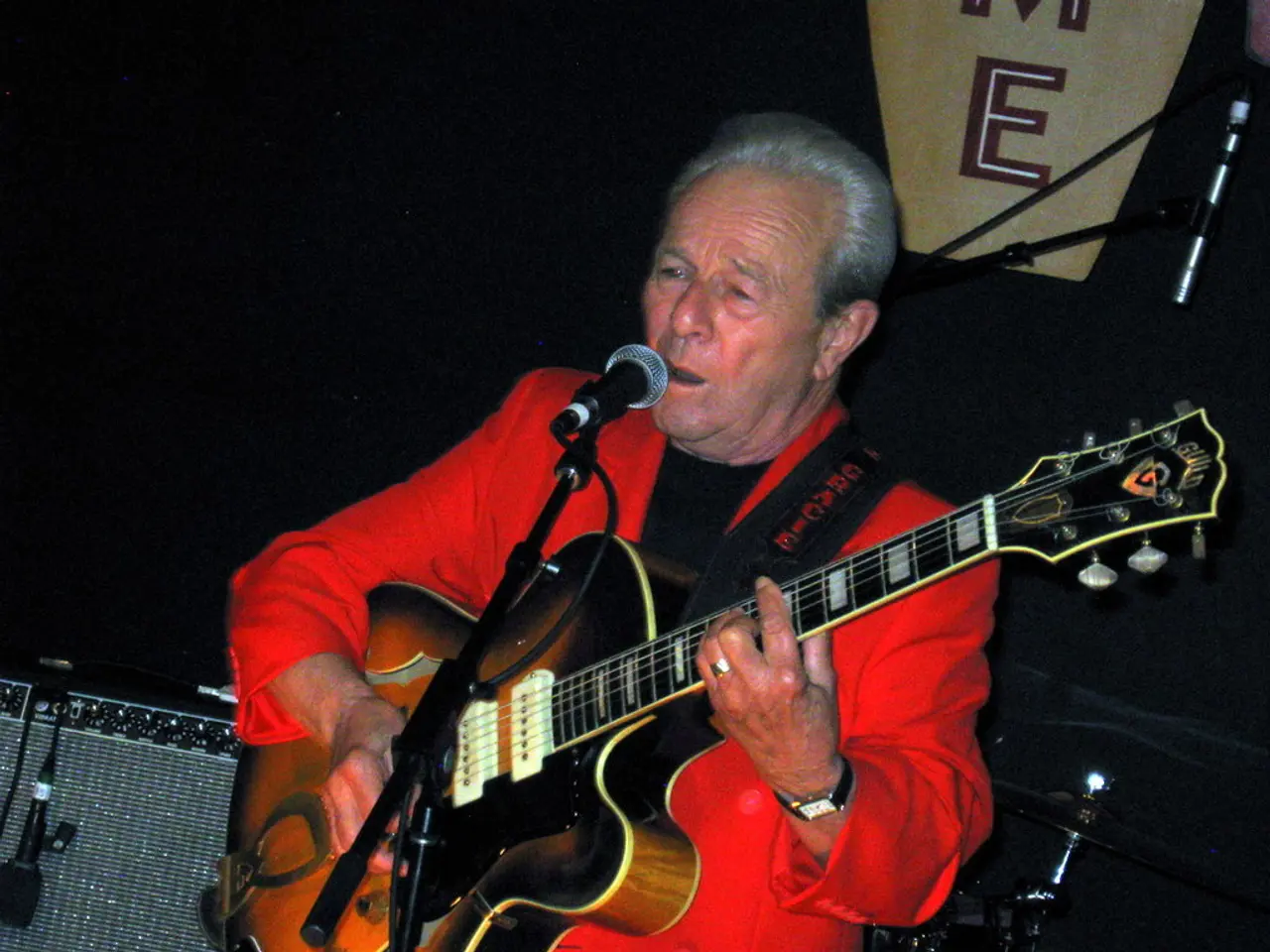Premier Vocal and Instrument Recording Mics
In the world of audio recording, selecting the perfect microphone can make a significant difference in the quality of your recordings. Each microphone is optimized for different sound sources, environments, and desired tonal characteristics. Here's a breakdown of some popular microphone types and their suitable uses.
Vocals
For pristine vocal recordings, the Rode NT1 is highly recommended. Its extremely low self-noise (4.5 dBA) ensures clean, noise-free capture. With a neutral tone, wide frequency response (20Hz–20kHz), and ability to handle loud sounds (up to 132dB SPL), it's versatile for singers, voiceover, and podcasters. It's a cardioid condenser mic best used in treated rooms with a stable mic stand.
For live vocal performance, dynamic mics like the Shure SM58 (gold standard) or the Electro-Voice RE-20 are ideal. These mics are robust and capable of rejecting background noise via cardioid polar patterns. The RE-20, in particular, suits rap and spoken word, offering a large diaphragm, humbucker coil for noise reduction, and limited proximity effect, making it a durable and versatile dynamic mic.
The Shure SM7B, a dynamic vocal mic, is also noted for clear, isolated sound in various setups and is widely used in broadcast and streaming.
Podcasting and Voiceover
For clarity and natural voice reproduction, condenser mics like the Rode NT1 are favored. However, their high sensitivity means they pick up room noise, so good room treatment or close mic technique (6-12 inches) and pop filters are crucial.
Dynamic microphones like the Shure SM7B or Electro-Voice RE-20 are also popular in podcast setups because they reject ambient noise better and provide warm, clear voices without the need for perfect room acoustics.
Musical Instruments
The Rode NT1 also performs excellently on instruments due to its wide frequency response and low noise, suitable for acoustic guitars, piano, and more.
Dynamic mics like the Electro-Voice RE-20 are durable and versatile for loud or close-miked instruments, with less susceptibility to feedback and handling noise.
Microphone Characteristics and Suitable Environments
Condenser microphones (RODE NT1, others) offer high sensitivity and wide frequency response, excellent for capturing detailed vocals and acoustic instruments but are best in treated, quiet rooms.
Dynamic microphones (Shure SM7B, Electro-Voice RE-20, SM58) are less sensitive, better at isolating sound sources in loud or untreated environments, and more rugged for live use.
Polar patterns matter: cardioid is standard to focus on the sound source while rejecting background noise; super/hyper-cardioid offers more directionality for live feedback control.
In summary, for studio vocals and detailed recording in quiet environments, premium cardioid condenser mics like the RODE NT1 excel. For live vocals, untreated spaces, podcasting with background noise, or instrument recording needing durability, dynamic mics such as the Shure SM7B or Electro-Voice RE-20 are top choices. Each has trade-offs in sensitivity, noise rejection, and tonal neutrality suited to different recording scenarios.
Other notable mentions include the Blue Yeti and Shure MV7 for high-quality YouTube video recordings, offering USB connectivity for direct use with computers. Budget-friendly options with professional sound quality include the Audio-Technica AT2020 and Rode NT1-A.
When selecting an audio interface, options with multiple input and output channels should be considered. Headphones that provide clear sound and comfort for prolonged use are desirable. Ensure a quiet space when recording with condenser microphones, as they can pick up background noise.
Accessories like pop filters and stands can enhance a recording setup for musical instruments. Features such as phantom power and gain control are crucial for achieving the best results with condenser and dynamic mics. A mute button on an audio interface can be highly beneficial for instantly silencing monitors without altering other settings.
[1] Rode NT1 [2] Electro-Voice RE-20 [3] Shure SM7B [4] Shure SM58 [5] Audio-Technica AT2020
- In the process of audio recording, the Rode NT1 microphone is a highly recommended option for capturing pristine vocals, with its low self-noise, versatile frequency response, and ability to handle loud sounds.
- Dynamic microphones like the Shure SM58 and the Electro-Voice RE-20 are ideal for live vocal performances due to their robust construction, cardioid polar patterns for noise rejection, and suitability for various sound sources.
- For podcasting and voiceover work, both condenser microphones like the Rode NT1 and dynamic microphones such as the Shure SM7B or Electro-Voice RE-20 are popular choices, each offering unique benefits in terms of noise rejection, sensitivity, and tonal neutrality.
- The Rode NT1 microphone is also suitable for recording musical instruments, thanks to its wide frequency response and low noise properties, making it a versatile choice for acoustic guitars, piano, and more.
- Dynamic microphones like the Electro-Voice RE-20 are durable and versatile for loud or close-miked instruments, with less susceptibility to feedback and handling noise.
- When contemplating a studio setup, having an audio interface with multiple input and output channels, and headphones that deliver clear sound and comfortable listening for extended periods are key considerations.
- Accessories like pop filters, stands, and an audio interface with features such as phantom power, gain control, and a mute button can significantly improve the recording quality and enhance the overall setup for musical instruments.




